Irrelevant Topics IV
in Physics
Topics:
Esoteric Programming Languages
Computer Science
ChutesAndLadders
Board Games, Physics
Esoteric programming languages
Not your grandpa's Turing machine
Esolang and You
Why learn an esoteric language?- To push the boundaries of code/computation.
- Examine the fundamental idea of an algorithm.
- Has been done before with information, cf. Shannon.
- Test computability, are non-computable ideas unphysical?
- Central Irrelevant Topics Paradigm: Divide by zero.
Grandpas Turing Machine

A infinite "tape" of finite symbols.
A "head" with an internal state that
can advance only one spot at a time.
A finite set of instructions:
given a state and symbol perform set action.
Church Turing:
Every Universal Turing Machine is equivalent to every other
Turing Complete
Once a language can be shown to be similar to the tape-machine it is identical from a computational standpoint to any other.
Turing Tar Pits
- Embody the idea of Turing's original tape machine.
- (very) Limited set of instructions.
- (very) Limited set of symbols.
- Create obfuscated, impossible to maintain codes.
- Extremely simple compilers.
- Serves as a model to construct higher-order languages.
Funges
- Extension of one-dimensional Turing tape machine.
- Live in metric spaces with coordinate systems.
- Usually Cartesian, but not necessarily.
- Considered a "funge" if topology is toroidal.
- More exotic topologies are classified as fungeoids.
Brainf*ck
- Extreme minimalism: Turing tarpit
- Designed to challenge and amuse programmers
- Not suitable for practical use
- Smallest compiler only 200 bytes!
Brainf*ck Instruction Set
- > increment the data pointer
- < decrement the data pointer
- + increment the byte at the data pointer
- - decrement the byte at the data pointer
- . output the value of the byte at the data pointer
- [ if the byte at the data pointer is zero, then instead of moving the instruction pointer forward to the next command, jump it forward to the command after the matching ] command.
- ] if the byte at the data pointer is nonzero, then instead of moving the instruction pointer forward to the next command, jump it back to the command after the matching [ command.
- , accept one byte of input, storing its value in the byte at the data pointer.
Brainf*ck Sample Code
Hello World
++++++++++[>+++++++>++++++++++>+++>+<<<<
-]>++.>+.+++++++..+++.>++.<<+++++++++++++++
.>.+++.------.--------.>+.>.
Befunge
- Stack-based, Turing-tape style language.
- Programs are arranged on a two-dimensional grid.
- Tape has the topology of a toroid.
- Arrow instructions direct the control flow.
- Loops are constructed by sending the control flow in a cycle.
- Befunge is a proper funge, and higher dimensional funges exist such as Trefunge.
Befunge Sample Code
Hello World
vv < <
2
^ v<
v13v4
^ ^
> >?> ?>5^
v v
v97v6
v v<
8
. > > ^
^<
Whitespace
- Ignores all characters but whitespace.
- Each whitespace combination forms a bit-pattern.
- Whitespace can be a polyglot.
- Stenographic capabilities.
- Challenges the idea of symbol and tape instructions.
- Proof of Turning completeness is now CS homework.
Whitespace Sample Code
Hello World
Say Hello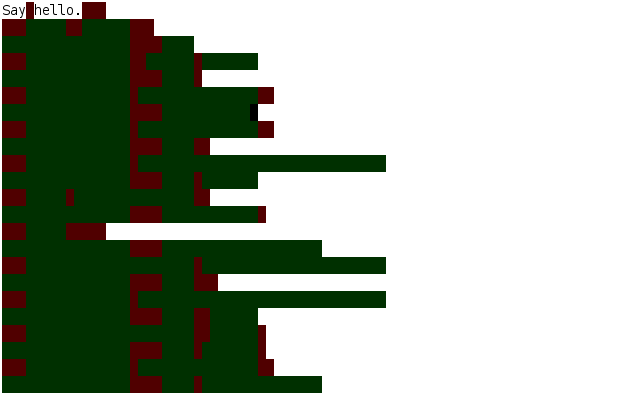
Non deterministic languages
Given the state of the program: the next action is taken
according to a probability distribution
Getting even trivial programs to have a reliable output is often a monumental task. Useful for exploring large search spaces, quantum computing, machine learning, ...
- Unreliable (a feature not a bug!)
- What is the notion of computability for a ND machine?
- Expectation values of computability, Turing is a special case
- Is Godel's incompleteness theorem even valid?
Chutes and Ladders
overthinking a classic
How many ideas of physics can be
expressed under the C&L topology?
Energy Landscapes
Chutes and Ladders Potential Function?
C&L does not possess a typical energy landscape; rather it is a stochastically driven process with discrete jumps.
Markov Chains
Used to represent transitions along discrete states, assumestime-invariance. represents the probability from
state , and .
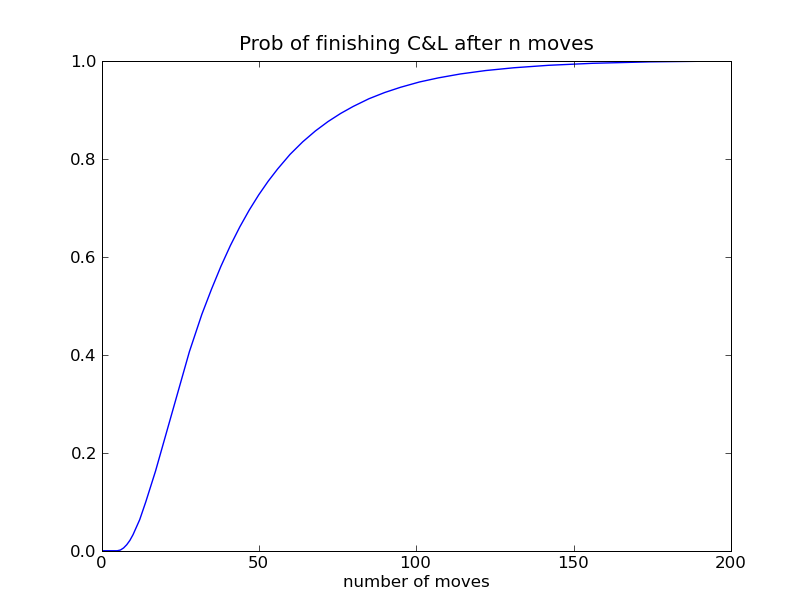
Single player Game Length Attention Span
Ergodic chain distributions
let the board become a loop, and look for steady state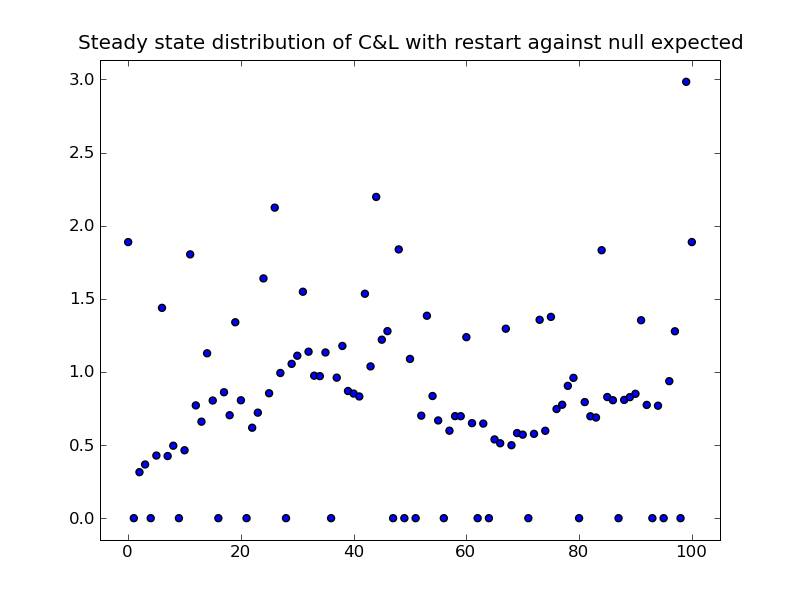
Approaching steady state
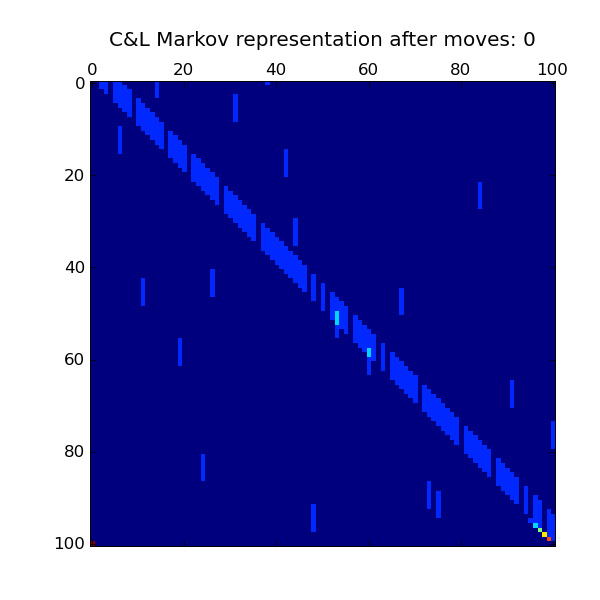
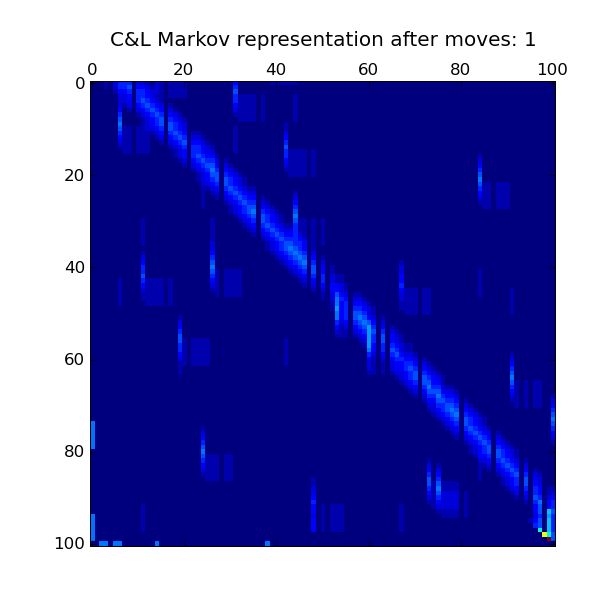
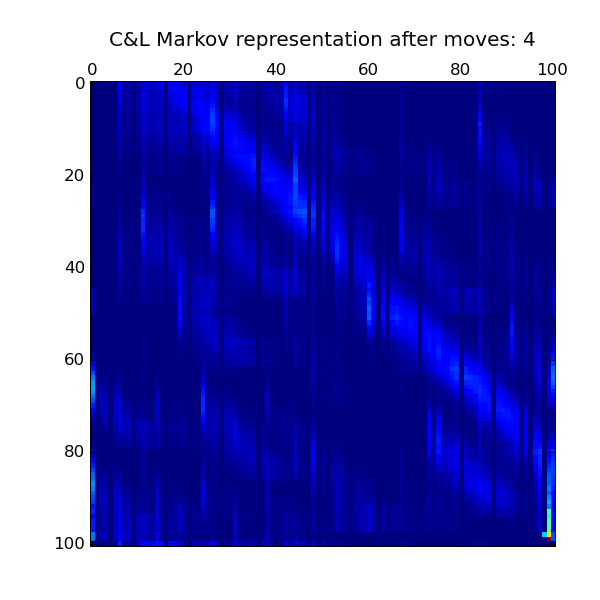
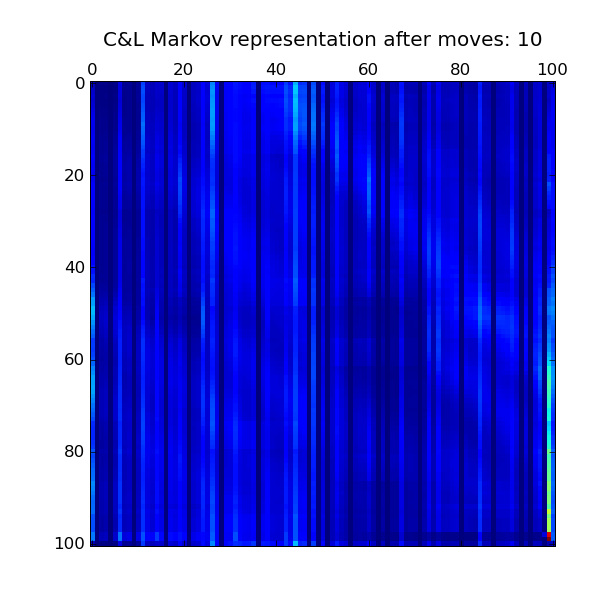
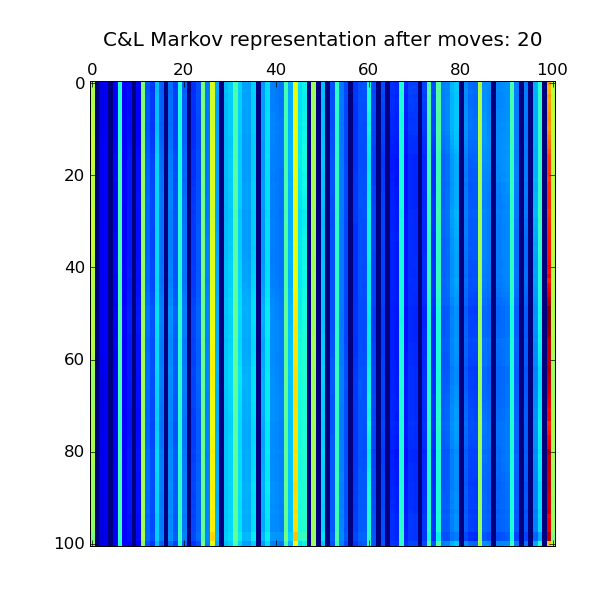
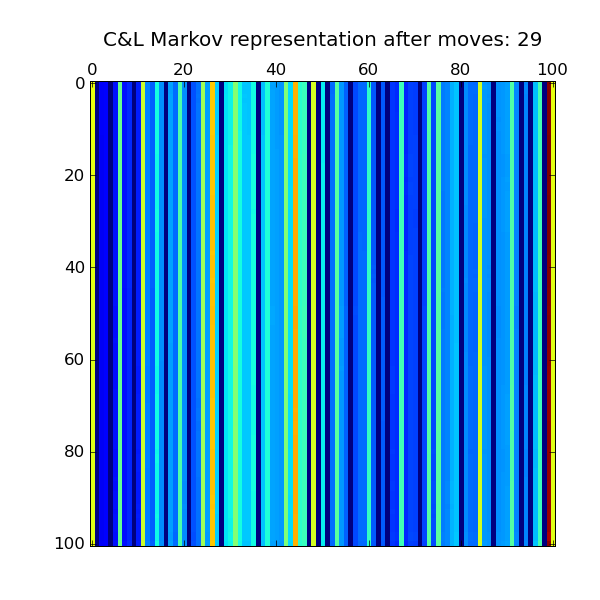
, , , , ,
Differential Operators over C&L
Exponential Maps, and flows give rise to a differential-mapping. A set of coupled first-order differential equations has a natural connection to Markov chains:
The Markov matrix is the generator of the rate matrix at a given time:
Continuous-Time C&L
Assume that the die rolls now represent rates (like a chemical equation), i.e. the first roll would be:
This system of equations can be exponential to give a continuous-time Markov game.
['height:300px']
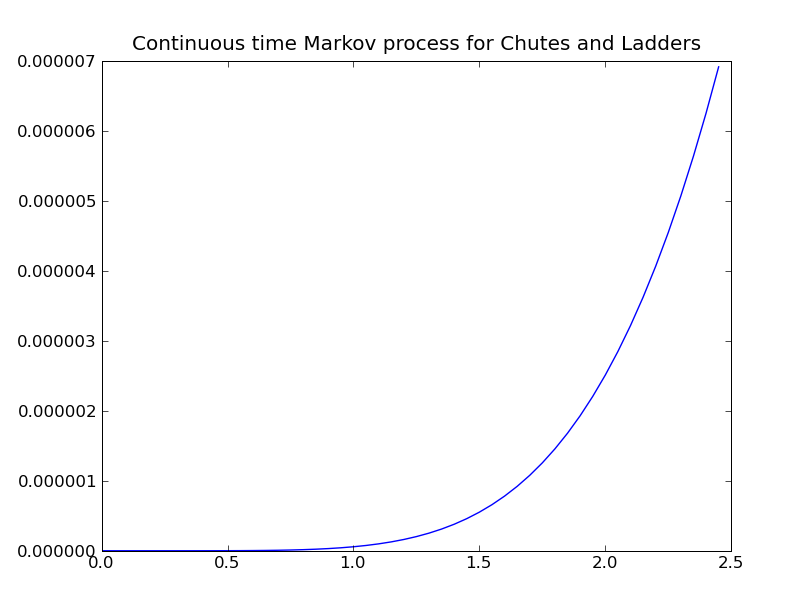
,
Note the abissica on the second picture,
we are modeling fractions of a die roll!